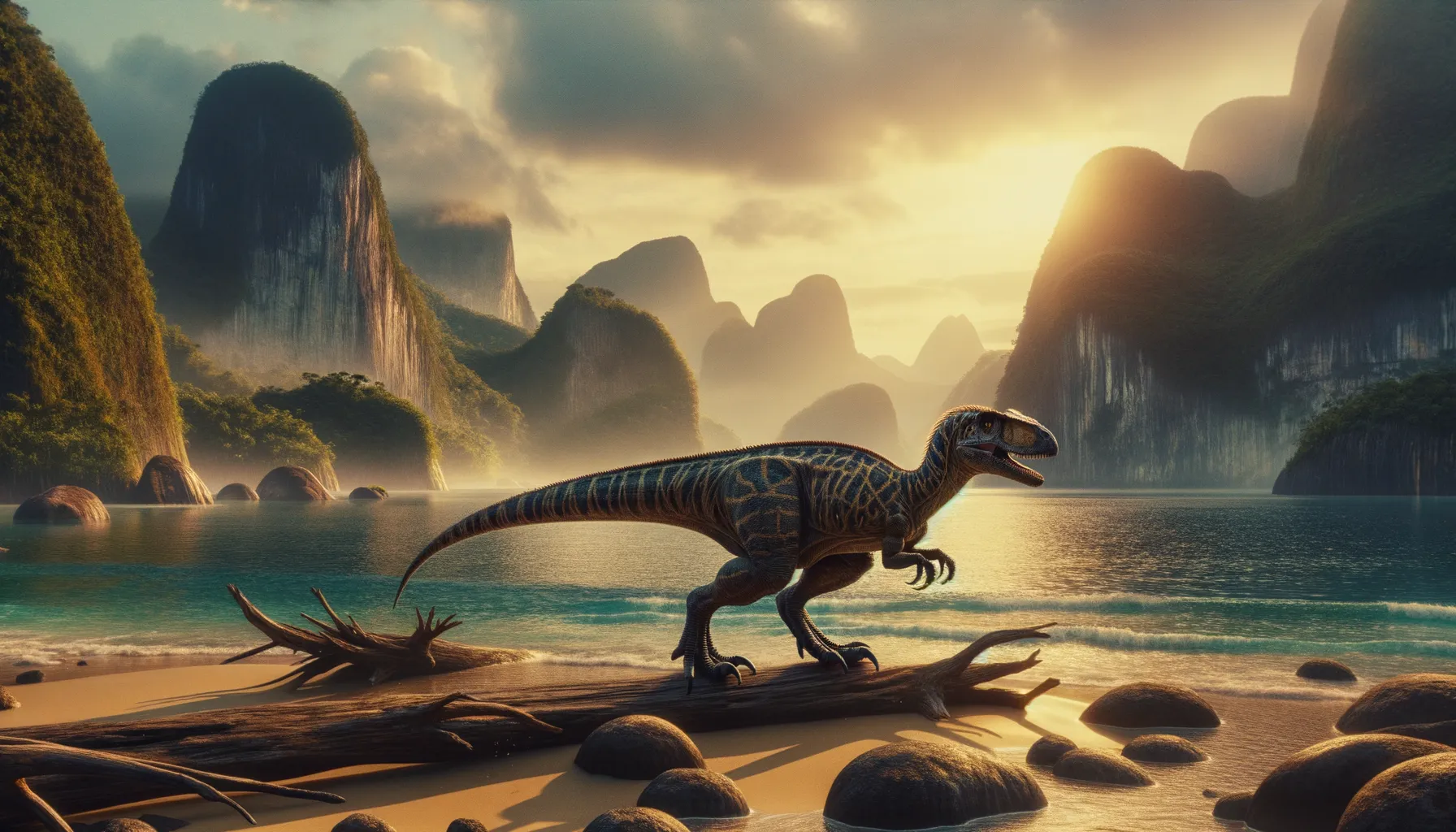
Vespersaurus
The agile predator of ancient sands.
Period
Cretaceous
Length
Around 1.5 meters (5 feet) long.
Height
Roughly 0.8 meters (2.5 feet) tall.
Weight
Approximately 15 kilograms (33 pounds).
Vespersaurus was a small, agile theropod dinosaur that roamed the ancient landmasses of what is now Brazil. First discovered in 2019, it offers new insights into the diversity of predatory dinosaurs late in the age of dinosaurs. Known for its unique foot structure and sharp claws, Vespersaurus was well-adapted to hunt small prey in its environment. Its fossils are helping scientists understand the evolutionary trajectory of theropods in South America.
Diet
Vespersaurus was carnivorous, primarily feeding on small vertebrates and possibly insects. Its sharp teeth and claws were well-suited for catching and subduing prey, allowing it to thrive in a competitive ecosystem.
Hunting
Vespersaurus likely used its speed and agility to ambush prey, striking quickly with sharp claws. Its specialized feet suggest it might have been capable of grasping or holding onto prey, improving its hunting efficiency.
Environmental challenges
The arid climate of its habitat posed challenges, with limited water and vegetation supporting a smaller number of prey species. Vespersaurus had to compete with other predators for these resources, driving evolutionary adaptations to enhance its survival. Seasonal changes could have further influenced its food availability, requiring flexible hunting strategies.
Speed
Moderate, with adaptations for quick bursts.
Lifespan
Estimated to be around 10 to 20 years.
First discovery
Uncovered in Brazil in 2019.
Fun Facts
- Vespersaurus was a small theropod dinosaur that lived about 90 million years ago during the Late Cretaceous period.
- This dinosaur was discovered in Brazil, making it a South American native that roamed deserts rather than dense jungles.
- Vespersaurus is known for having unique feet with long toes and sharp claws, which may have helped it hunt small prey or dig for food.
- Unlike many other theropods, it had a lightweight body and hollow bones, which made it agile and fast on its feet.
- The name 'Vespersaurus' means 'evening lizard', so it might have been more active during the cooler parts of the day.
- Studies suggest that Vespersaurus might have used its unusually large claw on the second toe for defense or capturing prey.
- It is part of the group called Noasauridae, which contains small to medium-sized predatory dinosaurs.
Growth and Development
Vespersaurus grew from hatchlings into adults, potentially facing predation in its early life stages. The rapid growth during its juvenile phase likely helped it avoid predators. As it matured, distinctive physical traits became more pronounced, aiding in its survival as a top small predator.
Habitat
Its environment consisted of arid to semi-arid regions with sparse vegetation and rocky terrain. This habitat provided limited cover and demanded excellent hunting skills for survival. Seasonal variables likely drove migrations or changes in prey availability, requiring adaptability from Vespersaurus.
Interaction with other species
Vespersaurus coexisted with other small theropods, herbivores, and possibly early mammals. This dynamic ecosystem led to competition for food and territory, influencing its behavioral strategies. The presence of larger predators might have limited its range or influenced its hunting patterns.
Natural lifespan
In the wild, it could live up to around 10 to 20 years.
Reproduction
Vespersaurus laid eggs, possibly in nests that were protected or guarded by adults. The breeding season might have been timed with favorable environmental conditions to ensure higher survival rates. Hatchlings faced immediate challenges from predators, relying on rapid growth and group protection.
Social behaviour
It might have exhibited some social behaviors, potentially hunting in small groups to improve their success rate. Territorial instincts were likely, with disputes over hunting grounds. Communication methods could involve vocalizations or visual displays to establish dominance.
Fossil locations
Fossils of Vespersaurus have been found in the Bauru Basin of Brazil, offering a window into Cretaceous life in South America. These discoveries are critical for understanding the regional ecosystem dynamics during its period. Further excavations in the area might reveal more about its lifestyle and interactions.
